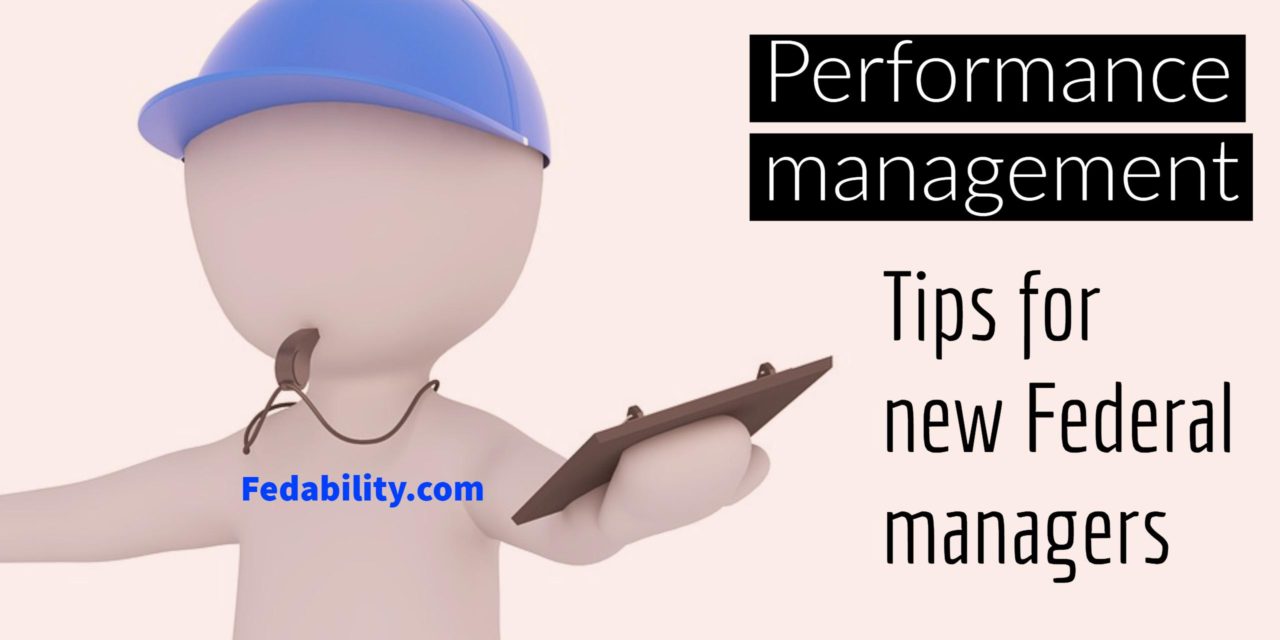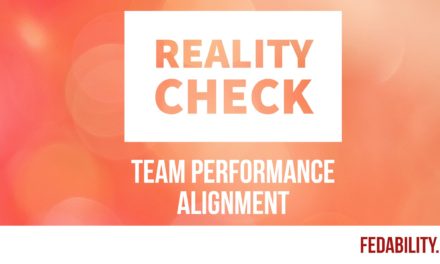When you boil it all down, the primary job of all managers is performance management. Performance management consists of components such as developing, monitoring, and rewarding. If you’re new to management in the government, you may not realize there’s several tools you should be using to manage team performance. We’ll talk about 4 of them here.
Performance management tip: Set the performance standard
First and foremost, managers must take the time to set and communicate the performance standards to the employee via the performance appraisal tool. A performance standard will describe the expectations, requirements, and/or threshold needed for a given performance rating. The trouble is that often times these standards are too generic to be enforceable. As a result, employees cannot reasonably be expected to know what to do to reach a certain level of performance.
OPM provides the guidance that managers can feel confident they have built strong performance standards. Performance standards are strong when managers are able to answer the questions:
- Does the employee know what to do to keep his or her job?
- Is the requirement possible?
- Does the standard measure the performance required by the supervisor?
- Are there any general descriptors (usually, rarely, timely, etc.) that need to be explained?
In some agencies, managers must keep the annual performance elements broad and high level. Managers who find themselves in these agencies can improve how they manage performance day-to-day. To do this they must provide specific instructions or expectations around quality, quantity, timeliness, and manner of performance. They must then also document whether employees met these expectations. Good documentation includes specific examples or samples of how the employee meets (or not) expectations. Remember, managers must include the dates in all documentation of when he/she meets with the employee, assigns work or described standards, and observes performance (or non performance).
OPM offers a good summary document that provides additional information on setting up and acting on performance standards.
Performance management tip: Distinguish between conduct and performance issues
Most managers just know they’ve got a ‘problem’ employee. They typically don’t realize that they need to be clear about what kind of problem they are dealing with. Specifically, the manager needs to determine whether the problem is a conduct issue or a performance issue. The easiest test of which problem a manager is dealing with is whether the employee can’t (performance) or won’t (conduct) do the desired activities. I love this checklist to help managers and appreciate its solid recommendation of managers working closely with their HR department.
The key here is understanding how the two types of issues are handled are differently. And, they must be handled independently. For this reason, when documenting issues the manager must keep separate files – one describing performance issues and one handling conduct issues. Which leads us to the next tip…
Performance management tip: Document early and frequently
With many problem employees, it starts off slow. They’re late on a couple deadlines and the quality of their work fluctuates a bit. Most managers over look it initially. But as the months go by and more performance issues begin to surface. One component of performance management that’s uniquely critical in government is documentation of performance – especially when an employee is a poor performer.
As performance issues begin to show more and more, the manager begins to document. Whenever the manager starts this process, they are looking at at least another 3-6 months of enduring the behavior as they gather documentation. Those next few months will be painfully long. The first time the manager starts documenting their first problem employee, they will regret they didn’t start sooner and/or did not document enough.
If you’re a new manager, or one lucky enough not to have had a poor performer yet, start now. Start documenting everything and everyone on the team.
- Document meetings with meeting minutes.
- Keep lists of delegated tasks and deadlines. Follow up with individuals to check in on deadlines and ask for any concerns about the assigned timelines.
- Document one-on-one conversations with any discussions of performance.
- Follow up team and individual meetings with summaries of discussions and any deadlines/assignments.
‘Worst’ case scenario, you will not have problem employees. And by documenting, you will be extremely well organized. ‘Best’ case scenario, you’re well prepared when a problem arises.
Performance management tip: Take advantage of probationary periods
Managers frequently under use the probation period. If you’ve recently brought on a new employee, keep their probation date on your calendar. You’ll already be doing a great job of documenting their performance (following the prior tip). Review the information sheet put together by the Merit Systems Protection Board for guidance on what can be used to terminate an employee during probation. The information sheet also discusses the employee’s rights during that process.
Remember, probation typically lasts for 12 months. If the employee hasn’t been able to perform over those first few months, it isn’t going to get better. You need to do the right thing for the team, yourself, and the low-performer – which is help them find a way out of the agency.
What other tips would you offer to a new manager? Share your insights in the comments below!
Like this post? Consider signing up for our weekly newsletter. Each week you’ll get updates on our newest posts. You’ll also receive access to our newest free give-aways. I promise not to spam you or sell your contact information to anyone.





